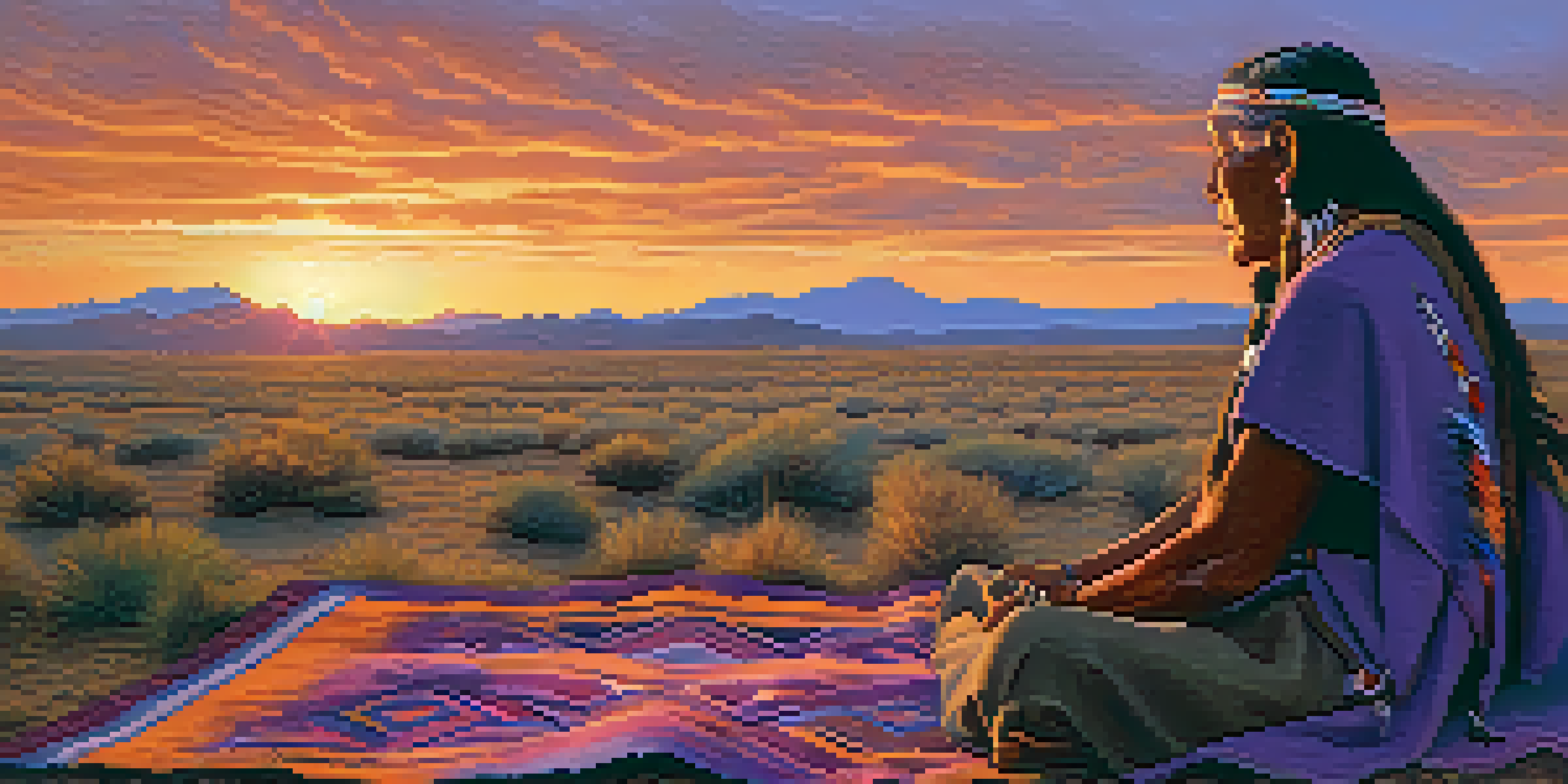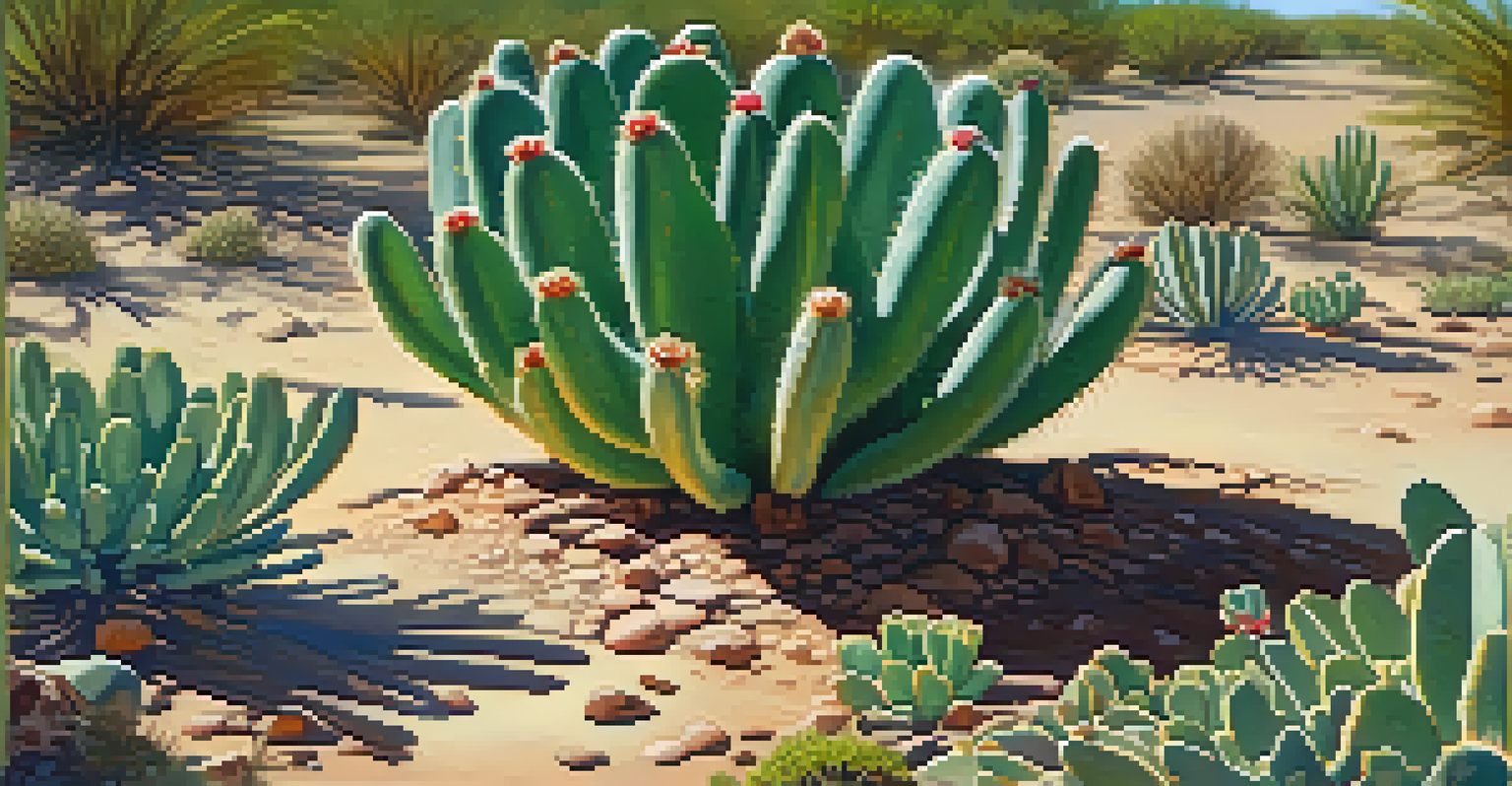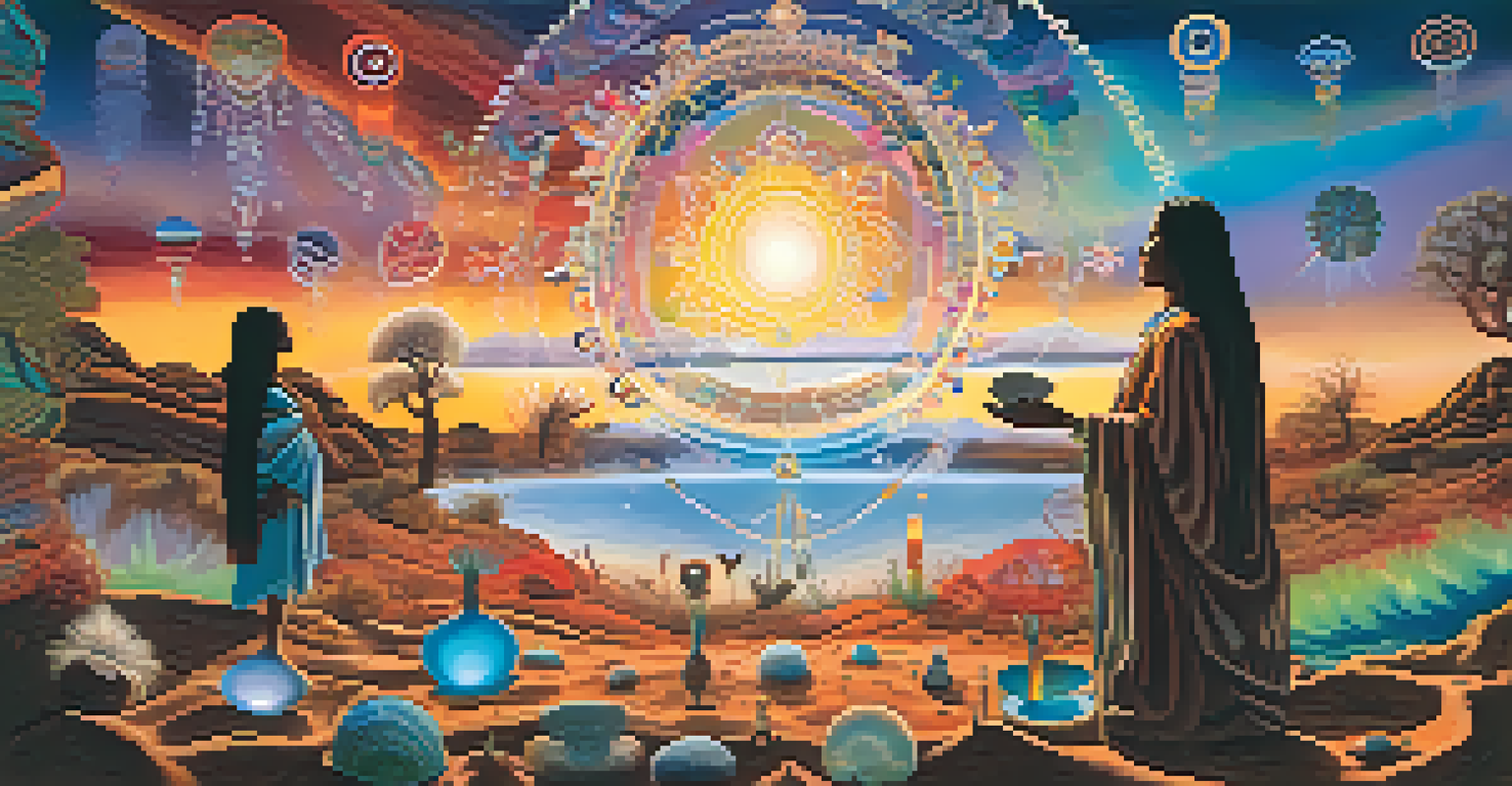Dreams in Native American Spirituality and Peyote Use

Understanding Dreams in Native American Culture
Dreams hold a significant place in Native American culture, often viewed as a bridge between the physical and spiritual worlds. They are considered a source of guidance, offering insights into personal and communal issues. Many tribes believe that dreams can reveal the future or provide messages from ancestors, making them an integral part of spiritual practices.
Dreams are the touchstones of our character.
For example, some Native Americans interpret dreams as a way to connect with spirit guides or to receive warnings about potential dangers. This perspective underscores the idea that dreams are not just random nighttime occurrences but meaningful experiences that require interpretation and reflection. Each tribe may have its unique approach to understanding dreams, further enriching the cultural tapestry.
Furthermore, dream-sharing rituals are common within many Native communities, where individuals recount their dreams to seek advice or support from others. This communal aspect reinforces the belief that dreams are not solely personal but can also impact the wider community, fostering a sense of unity and shared experience.
The Role of Peyote in Spiritual Practices
Peyote, a small cactus with psychoactive properties, plays a crucial role in various Native American spiritual practices, particularly among tribes like the Huichol and the Navajo. It is used in ceremonies to induce altered states of consciousness, allowing participants to explore their inner selves and connect with the spiritual realm. This connection is vital for personal healing and community bonding.

During peyote ceremonies, participants often consume the cactus in a communal setting, where guided visions can lead to profound insights. The experience is often accompanied by singing, drumming, and storytelling, creating a rich tapestry of cultural expression. This collective experience helps participants process their dreams and visions, often leading to enhanced clarity in their waking lives.
Dreams as Spiritual Guidance
In Native American culture, dreams are seen as vital messages from the spiritual realm, offering insights for personal and communal growth.
The use of peyote is deeply rooted in tradition, often viewed as a sacred gift from the Earth. It is essential to approach its use with respect and understanding, recognizing the cultural significance it carries. Many Native Americans emphasize that peyote should be used in the right context, guided by experienced practitioners to ensure a safe and meaningful experience.
Connecting Dreams and Peyote Experiences
The intersection of dreams and peyote experiences offers a unique lens through which Native American spirituality can be understood. Many participants report that peyote enhances their dream life, leading to vivid, transformative visions that can have lasting impacts. This synergy between dreaming and the peyote experience is often cited as a pathway to deeper spiritual understanding.
The greatest discovery of my generation is that a human being can alter his life by altering his attitude.
For instance, individuals may find that insights gained during a peyote ceremony manifest in their dreams, providing further context or clarity. This interconnectedness reinforces the belief that both dreams and peyote serve as tools for personal and communal growth. In this way, visions can become part of an ongoing dialogue with the spiritual world.
Moreover, the integration of these experiences into daily life can inspire individuals to act on the messages received, promoting positive changes within themselves and their communities. This holistic approach to spirituality highlights the importance of both dreams and peyote in shaping a fulfilling life aligned with one's purpose.
Peyote and Its Symbolism in Dreams
In many Native American cultures, peyote carries rich symbolism that often emerges in dreams. For example, dreaming of peyote may symbolize a call for healing or a need for deeper spiritual exploration. Such dreams can serve as a reminder to reconnect with cultural roots and traditions, emphasizing the importance of maintaining a spiritual practice.
Some dreamers interpret the presence of peyote in their dreams as an invitation to participate in ceremonies or to seek guidance from experienced elders. This dream symbolism acts as a catalyst for self-discovery, encouraging individuals to pursue their spiritual journeys actively. The imagery associated with peyote can also represent transformation, growth, and renewal.
Peyote's Role in Ceremonies
Peyote is a sacred cactus used in spiritual ceremonies to facilitate profound connections with the inner self and the spiritual world.
Additionally, peyote itself is often viewed as a representation of the interconnectedness of life, serving as a reminder that all beings are linked. Dreams featuring peyote may evoke feelings of unity with nature and the cosmos, reinforcing the belief that individuals are part of a larger spiritual tapestry. This connection can lead to a profound sense of peace and purpose.
Cultural Sensitivity Around Peyote Use
As interest in peyote and its spiritual uses grows, it's crucial to approach the topic with cultural sensitivity and respect. Many Native American communities have long defended the sacredness of peyote use, emphasizing that it is not merely a recreational substance. Understanding its cultural significance is essential for anyone looking to explore this aspect of spirituality.
Non-Native individuals interested in peyote should seek to learn about its traditions and contexts from authentic sources. Many tribes offer educational resources and ceremonies, which can provide valuable insights into the appropriate use of peyote. Engaging with these communities fosters respect and understanding, showing a willingness to honor their practices.
Moreover, discussions about peyote usage often intersect with broader issues of cultural appropriation. It's vital to recognize the history and struggles faced by Native American tribes regarding their spiritual practices. Advocating for the protection of these traditions ensures that peyote remains a sacred aspect of their cultural heritage.
Dream Interpretation in Native American Traditions
Dream interpretation is a vital practice in many Native American traditions, often viewed as an art that requires skill and intuition. Each dream is considered unique, and the symbols within them can hold personal or collective meanings. Elders or spiritual leaders often play a role in guiding individuals through the interpretation process, helping them unlock the messages hidden within.
For instance, common symbols like animals, nature, or specific colors can represent various aspects of life, from personal challenges to communal responsibilities. A dream featuring a bear might symbolize strength and courage, while one with flowing water could indicate emotional healing. This personalized approach to dream interpretation emphasizes the importance of context and individual experience.
Cultural Sensitivity in Peyote Use
Understanding the cultural significance of peyote is essential for respectful engagement, particularly for those outside Native American communities.
Incorporating peyote into this practice can enhance the clarity and depth of dream interpretation. After a peyote ceremony, individuals may find it easier to connect with their dreams, allowing for richer insights and more profound understanding. This interconnectedness illustrates how dreams and peyote work together to foster spiritual growth and awareness in Native American cultures.
The Ongoing Legacy of Dreams and Peyote
The legacy of dreams and peyote in Native American spirituality continues to thrive, shaping the identities and practices of contemporary tribes. As younger generations become increasingly interested in their cultural heritage, the teachings surrounding dreams and peyote are being revitalized. This resurgence highlights the importance of maintaining a connection to one's roots in a rapidly changing world.
Many Native American communities are actively working to preserve and share their traditions, ensuring that the wisdom of dreams and peyote is passed down. Workshops, ceremonies, and educational programs are being developed to engage both Native and non-Native individuals in understanding these practices. This effort fosters respect and appreciation for the rich cultural narratives that surround dreams and peyote.

Ultimately, the enduring significance of dreams and peyote in Native American spirituality serves as a reminder of the deep connections between individuals, their ancestors, and the natural world. By embracing these teachings, individuals can cultivate a more profound sense of purpose and belonging, weaving their stories into the larger fabric of spiritual history.